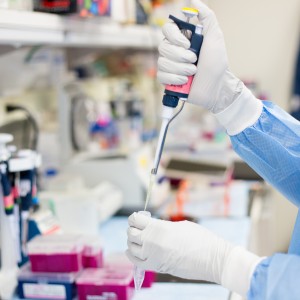Interferon Biomarker Assay Associated With Serological Lupus Manifestations
Written by |

 Researchers at Genentech and the University of Michigan recently revealed that a biomarker assay to assess the interferon signature in patients with systemic lupus erythematosus (SLE) is associated with serological features of the disease. The study was published in the journal Lupus Science & Medicine and is entitled “Association of the interferon signature metric with serological disease manifestations but not global activity scores in multiple cohorts of patients with SLE .”
Researchers at Genentech and the University of Michigan recently revealed that a biomarker assay to assess the interferon signature in patients with systemic lupus erythematosus (SLE) is associated with serological features of the disease. The study was published in the journal Lupus Science & Medicine and is entitled “Association of the interferon signature metric with serological disease manifestations but not global activity scores in multiple cohorts of patients with SLE .”
SLE is a severe autoimmune disease in which the body’s own immune system overreacts, resulting in an abnormal activation of the innate and adaptive immune system that leads to an attack to healthy joints and organs, resulting in inflammation, swelling, pain, disability and often in tissue destruction and multi-organ damage. Novel therapies and biomarkers that assist on SLE disease management are needed.
Previous studies on gene expression have profiled linked SLE development to the activation of type I interferon (IFN) pathway, with an IFN signature (IS) characterized by a considerable up regulation of more than 100 genes encoded by IFN-regulated genes. High levels of IFN-alpha in particular were found to be associated with disease activity, flares and tissue injury on the skin, nervous system and kidneys.
A biomarker assay has been previously described to accurately measure the IFN signature in SLE patients using a three-gene (HERC5, EPSTI and CMPK2) surrogate named IS metric (ISM). In the present trial study, researchers described the development of the ISM assay, its validation in several clinical trials, and a clinical and serological characterization of SLE patients with different ISM status. Patients enrolled in the clinical trials analyzed were submitted to blood collection and microarray analysis.
Researchers found that blood microarray expression data in SLE patients confirmed the presence of IS. An ISM assay was then performed and SLE patients were grouped into two different ISM subsets: ISM-low and ISM-high. Patients with an ISM-high status were found to have higher titers of anti-dsDNA antibodies and autoantibodies, complement deficiency and elevated serum BAFF levels (B cell activating factor of the tumor necrosis factor family). In terms of clinical disease activity, overall there was no significant difference between ISM-low and ISM-high patients, suggesting that ISM profile distinguishes SLE patients based on serological features but not on clinical phenotype.
The research team concluded that the ISM is capable of discriminating SLE patients into high or low status based on different serological manifestations. Although this classification could not be linked to disease activity, the authors believe that the ISM might be important in the identification of patients who are more likely to respond to therapies based on IFN, namely the ones targeting IFN-alpha.




